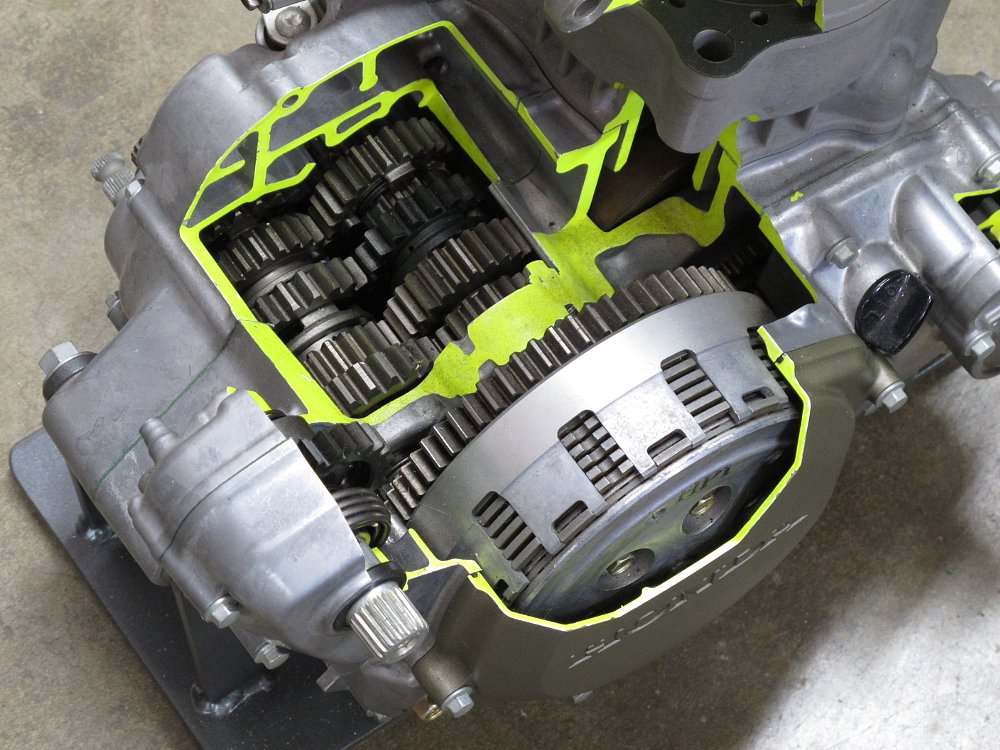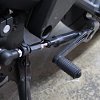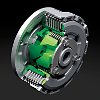In the four-wheeled world, automatic transmissions are the norm. When it comes to the two-wheeled motorcycle world, however, shifting gears is usually up to you. (Unless you’re on a scooter, an electric bike, or one of Honda’s many DCT-equipped models.)
And while shifting can be a hurdle for new riders, doing it well just takes a little coordination between your clutch hand and shifter foot on the left and your throttle hand on the right.
This article aims to provide info for various levels of rider, from total newbs to more experienced riders looking to learn advanced “clutchless” techniques. So peruse the subheads until you see something that appeals to you, and then dive in.

The basics: How to shift gears on a motorcycle
If you are a totally new rider, here are the basic actions of proper shifting technique.
From a stop
- With the engine running and the throttle closed, pull the clutch in all the way with your left hand.
- Shift down into first gear with your left foot. You should feel and hear the transmission click into gear.
- Slowly release the clutch with your left hand while simultaneously (but gently) rolling the throttle open with your right hand until the motorcycle begins to roll forward.
- As you continue to open the throttle with your right hand and the bike picks up speed, gradually and fully release the clutch with your left hand. You’re on your way!
Upshifting while moving
- Roll the throttle closed with your right hand.
- Pull the clutch lever in with your left hand.
- Shift up into the next higher gear with your left foot. As before, you should feel the transmission click into gear. If you release the clutch and the bike doesn’t drive forward, you’re in neutral between first and second gear. Pull the clutch in and shift up again.
- Slowly release the clutch with your left hand while reopening the throttle open with your right hand.
Downshifting while moving
- Roll the throttle closed with your right hand.
- Pull the clutch lever in with your left hand.
- Shift down into the next lower gear with your left foot.
- Slowly release the clutch lever with your left hand. If you are downshifting for a hill or to enable faster acceleration, roll the throttle open as you release the clutch. However, if you’re downshifting in preparation for coming to a stop, you only need to add enough throttle to match engine revs to your road speed so the bike slows down smoothly.
At first, coordinating these actions will take deliberate thought and may feel a little clumsy, and often riders are overzealous with their movements. Remember that throttle control comes from your wrist alone (and not your whole arm), and that shift actions should executed with a quick and deliberate shove from your foot.
Rest assured that with practice all of these movements will become smoother, and in time shifting will become so natural that you won’t even think about it.
Refining your understanding, and your technique
If those shifting CliffsNotes weren’t sufficient for you, let’s dive in a little deeper and get a better understanding of the mechanics of shifting so you can do it more efficiently.
To push a motorcycle down the road, power is fed from the crankshaft to the transmission, then on to the final drive (which can be a chain and sprockets, belt and pullies, or shaft), and finally on to the rear wheel. Between the crankshaft and the transmission sits the clutch, which serves as a progressive coupling device between the two.
When we talk about shifting gears, the term is apt, because we shift which pair of gears the power flows through. When the bike is accelerating on the gas or decelerating due to engine braking, there’s load on the gear faces. This load must be alleviated in order for the gears to shift position.
That’s where the clutch comes in. By pulling the clutch lever, you disengage the crankshaft from the transmission, thereby unloading the transmission so the cogs can shift over into the next position. The crankshaft and transmission are fully engaged when the clutch lever is out, and they progress to fully disengaged as you pull the lever all the way in.
You’ll need to fully disengage the clutch to shift into gear from neutral or to come to a stop while in first, but once you’re rolling you can actually shift gears without pulling the clutch lever in all the way.
“Fanning” the clutch is a term we use to describe quickly and partially pulling the lever to momentarily unload the transmission so you can shift up or down into the next gear. It’s an important technique, as it allows for faster, smoother shifting.
And, as it turns out, there’s a way to shift even faster, without using the clutch at all.
Clutchless shifting
You know how we said the clutch acts to disengage the crankshaft from the transmission to unload the gears and allow them to shift positions? Well that same unloading effect can be achieved by quickly and briefly rolling the gas off and then back on again.
In that instant right after you air the throttle, the transmission is unloaded. If you time your upshift to coincide with that momentary unloading of the transmission, the bike can be shifted up up into the next gear. No clutch required.
To get a feel for the timing of things, it can help to gently preload the shifter with your toe. That way, as soon as you air the throttle, the shift lever moves up and the gears change. In time, you’ll be able to coordinate your throttle and shifter movements to execute slick upshifts without the clutch. It’s the fastest way to upshift, both in terms of shifting gears and in terms of road speed.
There’s clutchless downshifting, too, but it requires even more precision and finesse, and doesn’t offer any real performance advantages. It is fun though, and it’s a good skill to know in case you break your clutch lever or clutch cable while out on a ride.
To clutchless downshift, you’ll need to use a technique called throttle “blipping,” which is when you’re decelerating with the throttle closed, but very quickly open the throttle partially to unload the transmission and allow a gear change. As with clutchless upshifts, you’re timing your shift with that momentary window when the revs peak and the transmission is unloaded.
Clutchless downshifting works best when you’re decelerating on the brakes since that helps match engine revs to road speed. However, that means blipping the throttle while pulling on the front brake lever, which can be a tricky combo to master.
Then again, part of the fun and satisfaction of riding a motorcycle is perfecting the many techniques it takes to operate the machine. Hopefully after reading this article, you’re better equipped to tackle the task of shifting gears on a motorcycle, no matter what your current skill level is.













